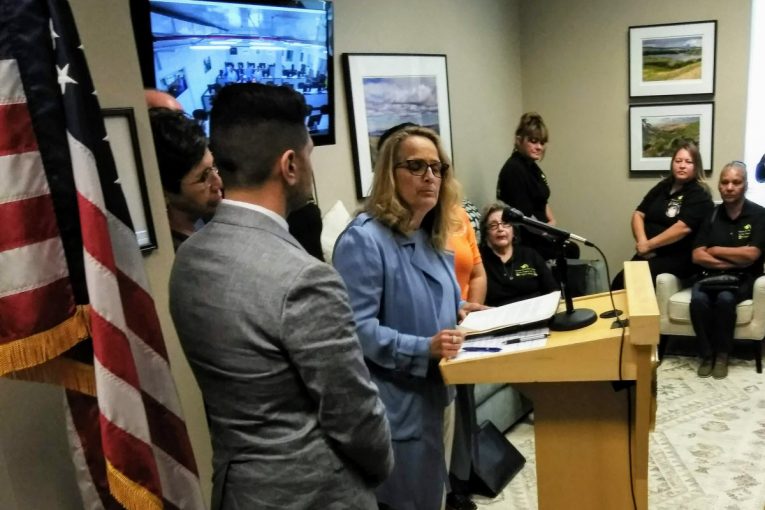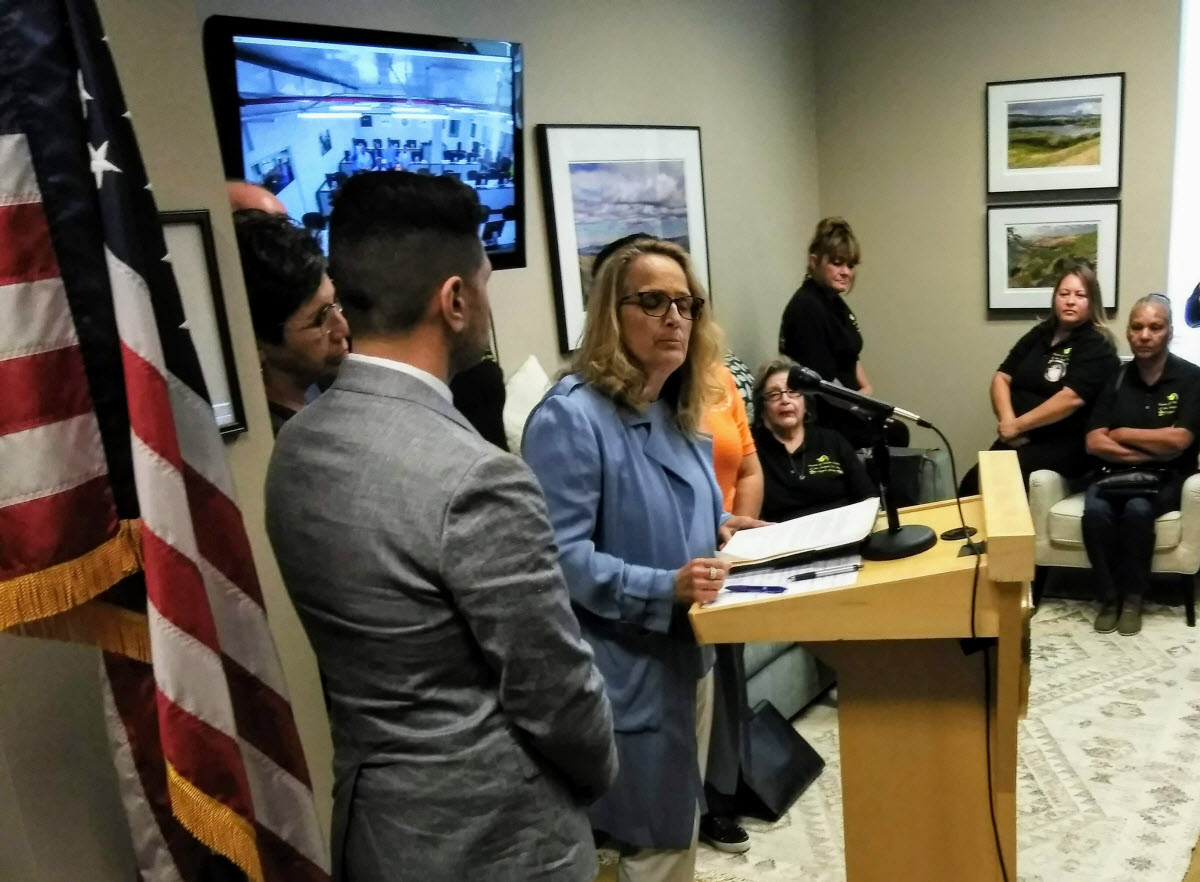

By Crescenzo Vellucci
Vanguard Sacramento Bureau
SACRAMENTO – It was, no doubt, an unusual State Capitol press conference – a county prosecutor hawking a program to keep criminals out of jail, and inmates at San Quentin Prison speaking by Skype about how they are confronting the victims of their violent crimes.
A “restorative justice” diversion program in San Joaquin County is predicted to save California taxpayers money, reduce recidivism rates and make the streets safer, according to lawmakers and lawbreakers this week.
In other words, the 70 percent recidivism in the state (those who go back to jail after getting out), could turn into – based on the San Joaquin program experience – a five percent recidivism rate.
The cost to house people in jail in the state hovers around the $75,000-86,000 figure, so the tax dollar savings could be extremely significant – let alone make the streets safer – if the restorative justice program works on a broader scale, proponents claim.
The program will be available to those accused of some lower level felonies – but not murder or sex crimes – and misdemeanors, and links them with victims of crime in a “cooperative effort between victim and defendant in which defendants are made aware of the personal impact of their criminal actions…the victim of the crime has an opportunity to work with the defendant in an attempt to dissuade the defendant from committing similar crimes in the future,” according to a legislative analysis.
If the accused “graduate,” they can have charges reduced or be sentenced to something other than jail. If they fail, they face sentencing or a trial.
Sen. Steve Glazer (D-Contra Costa), who authored SB 678, which led to the $5 million restorative justice budget, was pointedly optimistic, noting “This is a way to make it better, not just throwing away  the key.”
the key.”
He explained that restorative justice “held promise” to reduce crime, and give victims “greater satisfaction” that the criminal justice now.
“This program will allow for an expanded test of the concept, with a rigorous review of the results. If it works as we expect, the program could be expanded statewide and would reduce prison costs while improving lives for offenders and the broader community,” he said.
Interestingly – because public perception of prosecutors is that they only about being tough on crime – the most excited press conference participant appeared to be San Joaquin County District Attorney Tori Verber Salazar, who has seen the results of a similar division program in her county.
“It’s smart. This is a pathway to stop harmful conduct,” she said. Her program, Salazar boasted, had a 95 percent success rate with 76 juvenile and adult prisoners. Only three failed to complete it.
She noted that one senior citizen while admitting she couldn’t forgive the accused, supported the program because she “didn’t want a kid to spend his life in prison.”
Is the program guaranteed to work?
Not necessarily said Salazar suggesting that those involved have to be willing to work hard and noted many inmates refused the similar San Joaquin program because it was so “rigorous…they’d just rather play cards” in jail.
“Restorative Justice has shown in limited circumstances to hold promise as a way to reduce crime and give victims greater satisfaction than the traditional criminal justice system,” Glazer said. “This program will allow for an expanded test of the concept, with a rigorous review of the results. If it works as we expect, the program could be expanded statewide and would reduce prison costs while improving lives for offenders and the broader community.”
At the press conference, Adnan Khan, Co-Executive Director at Restore Justice – he served 16 years of a life sentence for murder – said that “The Restorative Justice Pilot Program is an important step for the future of restorative justice in California,” adding, “restorative justice is the best framework to address harm, hold people accountable and keep communities together.”
“We talk a lot about how important it is to make our justice system truly reflect rehabilitation and restoration rather than punitive consequences alone, and this proposal does just that,” said Assemblymember Susan Eggman, who co-authored SB 678. “Evidence suggests that this is worth trying on a broader scale, and I’m proud that San Joaquin County has stepped up to promote repairing harm and healing in the community.”
According to a statement from the Restore Justice group, Restorative Justice is “an ancient concept that is now being tried again as a way for victims to play a greater role in the criminal justice process if they wish. Direct interaction with offenders has been found to give some victims more satisfaction than they receive through an impersonal and detached criminal court proceeding.”
According to the new state budget, the San Joaquin County pilot project has a goal of providing “healing for survivors, prevent recidivism, keep families together, prevent long term unemployment resulting from conviction, and lower prison costs.”
Independent evaluators will grade the project when it ends.






Key word, “limited”… but, definitely worth pursuing… on many levels, not just financial.
Key concept… there are sociopaths… rare, but not likely to change with ‘restorative justice’.
Key “take-away”… a good tool (restorative justice), that should be used as often as appropriate… but not a panacea… one ‘size’ does not fit all… I support, strongly, the use of the right tool to deal with things… we need a good toolbox… well stocked… for whatever needs to be done.
Sociopaths are “rare”? I guess I know more than my share then . . .
Was trying to be “courteous”, and PC, Alan… know that several here would put me in that category… and, they may not be wrong in so doing… won’t ask you of your view… not sure I’d like to hear it…
But, to what I believe is your point, what I was trying (however clumsily) to say, is RJ can be a good tool, but sometimes, one needs a chainsaw and/or backhoe to deal with a rotted tree. Harsh, but real.
Clumsy again, je pense…
Well, since you asked . . . NO
Well, maybe except when it comes to the issue of Trackside.
But seriously, I’d have a hard time spotting a sociopath without meeting them in person.
And I doubt sociopaths comment on blogs or social media . . . why would they care? Well, maybe to manipulate people, come to think of it. I take back that comment, ‘they’ are among us.
That’s my issue with RJ – it won’t work on sociopaths or anyone without a heart, or ability to access said heart, and it may be seen, as it becomes more mainstream, as an ‘easy way out’ for many criminals.